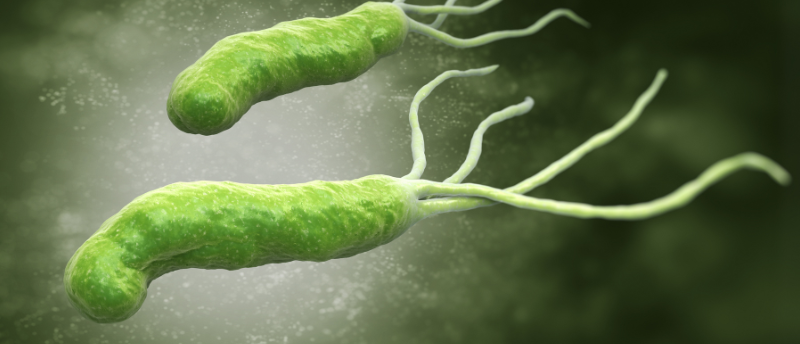Studying bacteria motility through yield-stress fluids

Researchers have investigated the fluid dynamics of Helicobacter pylori (H. pylori) moving through gastric mucus using a 3D model and a magnetic field.
H. pylori is a bacterium that infects the stomach causing inflammation and is one of the main causes of ulcers. Researchers at Florida State University (FL, USA) have created a 3D-printed model to help investigate how this spiral-shaped microorganism propels itself through viscous fluids, hoping this will lead to alternative treatments for H. pylori infections, which are normally treated with antibiotics.
H. pylori uses its corkscrew-like tail to move through viscous fluids, like stomach mucus. To understand its motility, the researchers 3D printed a model of the bacteria and placed it into a high-viscous polymer gel. This fluid behaves like a solid under a small amount of stress but will flow like a liquid beyond a critical stress point, known as a yield-stress fluid. They then applied a magnetic field to mimic the rotating movement of the H. pylori bacteria.
The researchers measured the speed of their 3D model moving through the fluid and visualized the distribution and density of the fluid flowing around it using particle tracking and imaging techniques.
 Bacteria provide inspiration for novel therapeutic delivery approaches
Bacteria provide inspiration for novel therapeutic delivery approaches
Two different research groups have harnessed natural bacterial systems to deliver therapeutic payloads.
Their results revealed two critical threshold points that need to be overcome in order to move through the yield-stress fluid, otherwise, the bacteria remain stuck in the fluid.
Firstly, the fluid’s yield strain needs to be exceeded so the bacteria can rotate its tail. Secondly, the fluid’s yield stress needs to be low enough that a large volume of fluid is set into motion once the strain has been overcome. If these conditions are met, the bacteria will only move through the fluid if its tail propulsion is strong enough to deform the fluid surrounding it.
Once the bacteria has started moving, the pitch angle of the tail determines the speed of the movement.
The researchers hope that understanding how this microorganism moves through fluids will lead to alternative treatments for infections and bypass the need for antibiotics, such as finding ways to strengthen the gastric mucus to prevent the bacteria’s propulsion through it. Additionally, this experimental approach could also be applied to investigate the movement of other organisms, including parasites.
“In the future, we can design a micro-robot that can deliver a drug to a particular location in the body, in terms of fighting leukemia and other diseases,” said Kourosh Shoele, a co-author of the paper. “Or perhaps we can design tiny robots that use swimming motion and force, like H. pylori, that can dig deep in the sand to explore for water or oil. The possibilities are endless.”